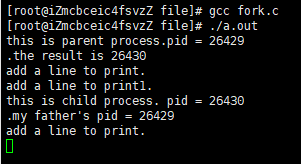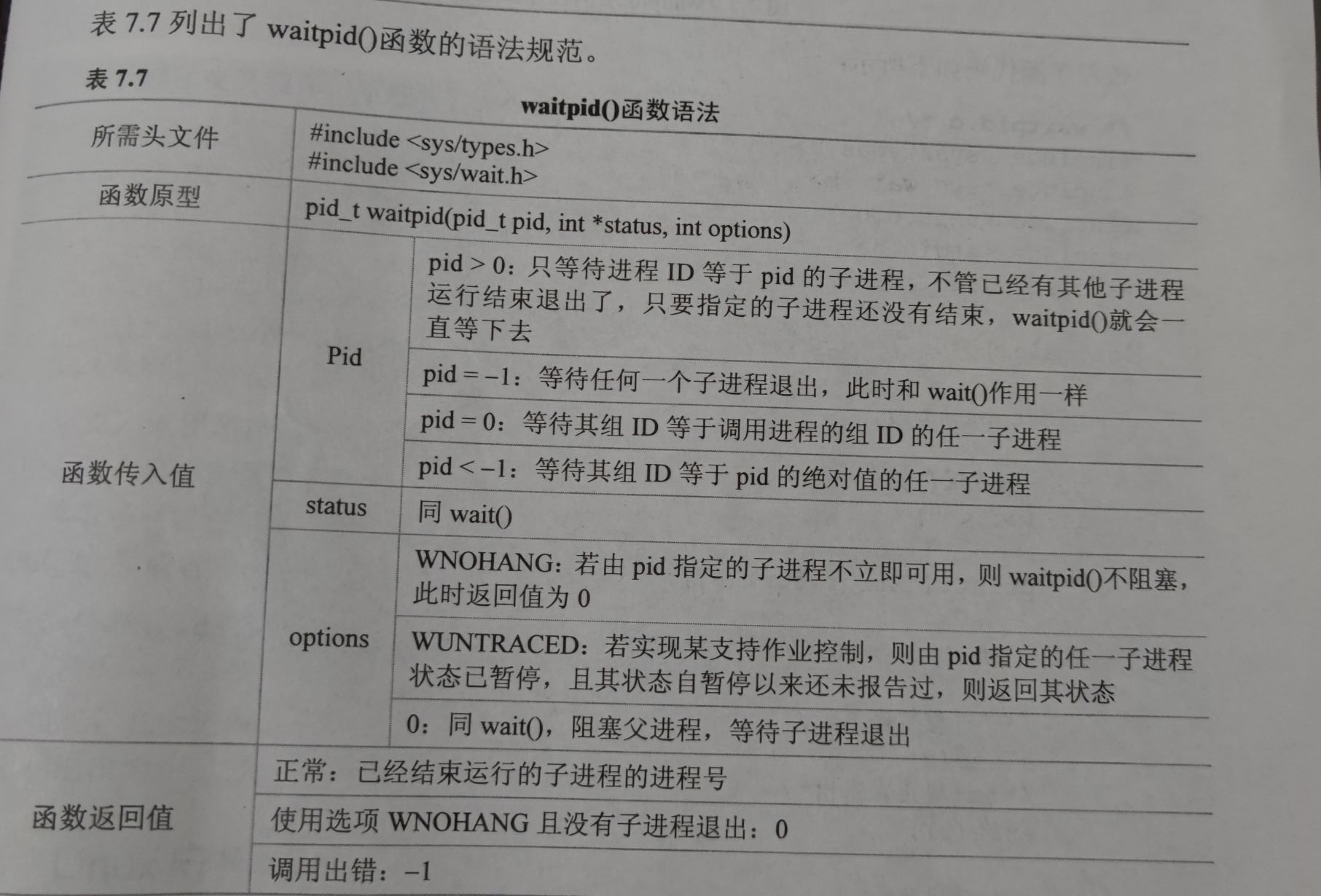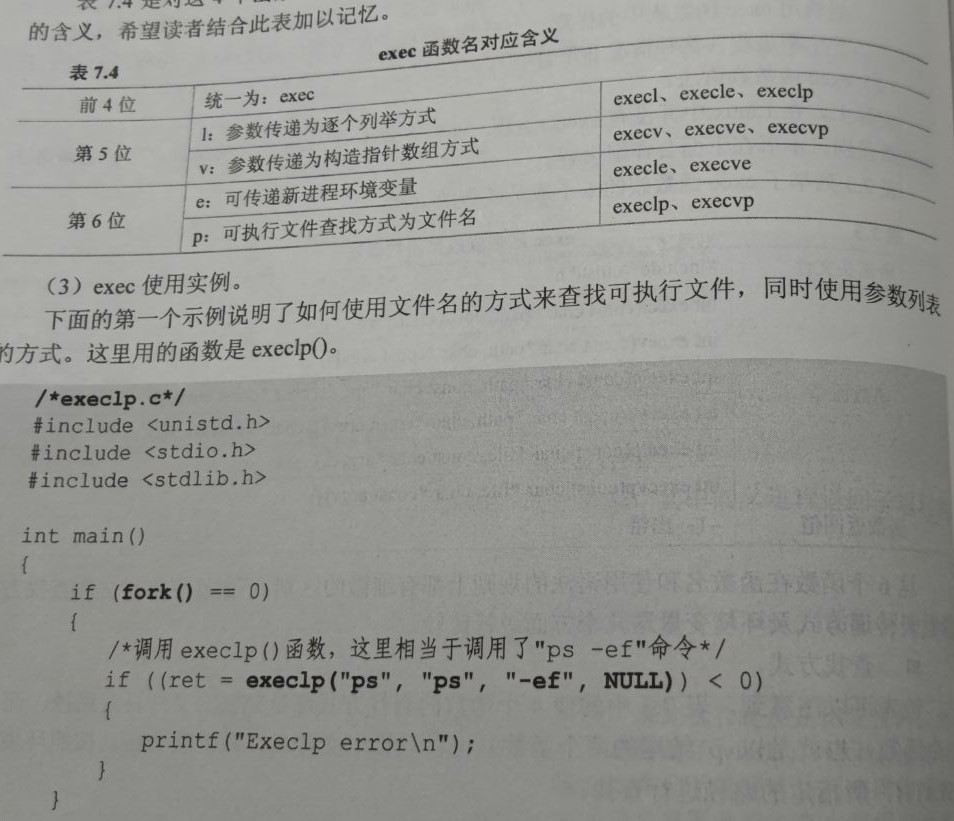以下内容仅作为个人记录的参考,但也欢迎读者前来指正。
fork()
#include<sys/types.h> #include<unistd.h> pid_t fork(void) 返回: -1:出错。 0:子进程 否则为父进程。
#include<stdio.h> #include<sys/types.h> #include<unistd.h> int main() { pid_t result; result = fork(); if(result==-1) { printf("fork出错 "); return 0; } else if(result==0) { printf("this is child process. pid = %d .",getpid()); printf("my father's pid = %d ",getppid()); } else { printf("this is parent process.pid = %d .",getpid()); } return 0; }

为什么父进程的id不是25905呢,有点奇怪。
这就是不正常的情况,父进程pid变了,说明原来的父亲没了。没了,在这里看来只能是运行结束了。
所以延长一下父进程的进程时间。
#include<stdio.h> #include<sys/types.h> #include<unistd.h> int main() { pid_t result; result = fork(); if(result==-1) { printf("fork出错 "); return 0; } else if(result==0) { printf("this is child process. pid = %d .",getpid()); printf("my father's pid = %d ",getppid()); printf("add a line to print. "); } else { printf("this is parent process.pid = %d .",getpid()); printf("the result is %d ",result); printf("add a line to print. "); printf("add a line to print1. "); getchar();//阻塞输出 } return 0; }

果然,父进程结束太快,所以儿子被别人收养了。
那么,刚才pid为1的又是什么进程呢。

不太清楚,可能就是单纯被某个系统进程收养了吧。
可以参考此篇博文。
https://blog.csdn.net/Oerror_/article/details/104361264
退出进程:
#include<stdlib.h> exit(0) #include<unistd.h> _exit(0) 一般填0代表正常退出。 区别在于exit会对缓冲区做一些操作。 比如输出缓冲区的内容。
#include<stdio.h> #include<sys/types.h> #include<unistd.h> int main() { pid_t result; result = fork(); if(result==-1) { printf("fork出错 "); return 0; } else if(result==0) { printf("子进程调用exit(0) "); printf("this is a test line."); _exit(0); } else { printf("父进程调用exit(0) "); printf("this is a test line."); exit(0); } return 0; }

区别就在于,_exit(0)比exit(0)少输出了一些内容。
waitpid(),这里就略掉wait()了。

#include<stdio.h> #include<sys/types.h> #include<unistd.h> #include<stdlib.h> int main() { pid_t result; result = fork(); if(result==-1) { printf("fork出错 "); return 0; } else if(result==0) {
printf("i am child. my pid is %d. ",getpid()); sleep(5); exit(0); } else { pid_t pr; do{ pr = waitpid(result,NULL,WNOHANG); if(pr==0) { printf("the child process has not exited. "); sleep(1); } } while(pr==0); if(pr==result) { printf("the child pid is %d ",pr); } else { printf("error occured. "); } } return 0; }

此外,也并不是简单的父进程就输出5遍,还可能因为执行速度执行6遍。
还有一个创建进程的就是exec函数族。


